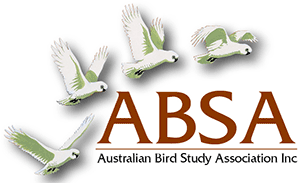FORAGING ECOLOGY AND HABITAT USE OF THE SWIFT PARROT ON THE SOUTH-WESTERN SLOPES OF NEW SOUTH WALES
| Posted: |
21/07/2021 |
| Author(s): |
Anthony E. Overs, Simon J. Kennedy |
The foraging ecology and habitat use of the Swift Parrot
Lathamus discolor was investigated in the southwestern
slopes region of New South Wales in May 1999. An extensive search of known and potential habitats
was conducted in the study area.
A total of six Swift Parrot sites was located during the study period, all of which were in open forest and
woodland dominated by Mugga lronbark
Eucalyptus sideroxylon or Mugga lronbark-Grey Box
E. microcarpa
association. Both eucalypt species were used by Swift Parrots for foraging resources. Swift Parrots were mainly
observed foraging on the nectar of Mugga lronbarks. They also foraged on other carbohydrates on Grey Box.
Swift Parrots foraged in the largest trees in the landscape. Swift Parrot records from the study area in other
years indicate that woodlands dominated by White Box
E. albens are also of importance.
The Swift Parrot is capable of locating small patches of suitable habitat in a highly fragmented landscape.
A significant proportion of the non-breeding Swift Parrot population is reliant on the south-western slopes of
New South Wales in some years. The results here demonstrate that appropriate management of Mugga lronbark-Grey
Box communities is a priority for Swift Parrot conservation in this region but further work is needed to
ascertain the possible importance of other vegetation communities such as White Box woodland.
>> Download Abstract |
File Size: 145 KB
>> Download Complete PDF | File Size: 912 KB
